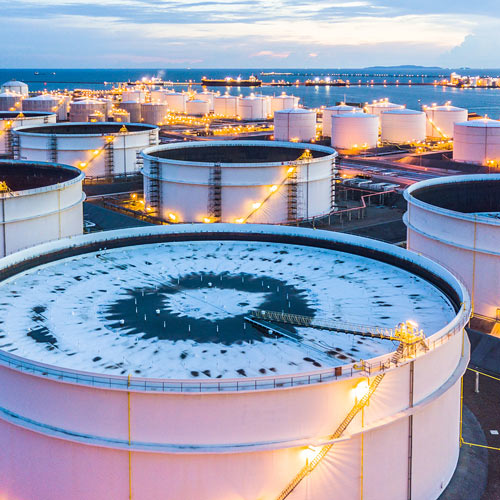The oil market was shaken to its core when NYMEX WTI prompt contract prices, for the first time in history, fell into negative territory. Commentators were prompt to point to an explanatory factor: the US is out of storage capacity. Kayrros data show there is more to the story. While global crude stocks have surged and the little remaining storage capacity at the Cushing, OK storage hub, the WTI delivery point, may indeed be booked for May, utilization at storage terminals across the US and throughout the Americas and the Caribbean remains surprisingly low.
As Cushing fills up, other Western Hemisphere storage hubs have plenty of space left
The warnings over the month preceding the WTI crash had been clear. In addition to a rise in floating storage and reports of full tanks in the US and Canada, Texas Railroad Commissioner Ryan Sitton tweeted in late March that pipeline operators were asking producers to cut output because they were “out of storage.” It’s here, however, that the data begins to deviate from the prevailing narrative. Storage tanks elsewhere in the US, in Canada, in the Caribbean, and across Latin America have significant amounts of unused capacity.
Not only is storage capacity far from maxed out in most terminals across the Western Hemisphere, but crude inventories in the Americas outside the US are bucking the global trend and actually edging lower.
Caribbean tanks, historically a choice spot for opportunistic traders, sit nearly empty
The most surprising trend in global crude storage may be that of the Caribbean. Because the region’s crude storage facilities are almost entirely commercial and under normal circumstances easily accessible for tankers, Caribbean tanks have historically been key for storage arbitrage players when oversupply forces the Brent market into contango. If the Atlantic Basin is as awash with crude as the Brent structure would imply, Caribbean tanks would normally be filling at a breakneck pace. Instead, they’re falling. Since reaching 18-month highs in March, Caribbean stocks have dropped to levels just 7 MMb higher than the historic lows Caribbean stocks reached last August, effectively tank bottoms.
Oil producing countries drive decline in Latin American crude oil stocks
The biggest deviation from the global trend toward massive builds has been in South America. Latin American stocks rose steadily during 2019 as Brazilian export capacity struggled to keep pace with production increases in subsalt oil fields. Those builds continued into 2020 and, in early April, Latin American crude stocks reached the highest level of inventories in the region in the history of Kayrros satellite monitoring. Latin American inventories have since been plummeting, however.
Venezuela crude inventories provide another example of the unreliability of anecdotal evidence that is not supported by data. Last year, it was widely reported and broadly accepted that Venezuelan storage facilities were at tank tops. Just last month, the New York Times reported that “sanctions [have led] to a near-overflow of petroleum storage tanks in Venezuelan ports.” Yet Venezuela never reached tank tops. Even at its fullest last October, crude storage at Puerto Jose was at just 73% of nameplate capacity. And today, even as the US government continues to ratchet up sanctions on the foundering petrostate, Venezuelan inventories are falling. Venezuela is a special case, however, as US sanctions keep available storage capacity there out of bounds for market participants. Not so with empty capacity in the US and elsewhere in the region.

